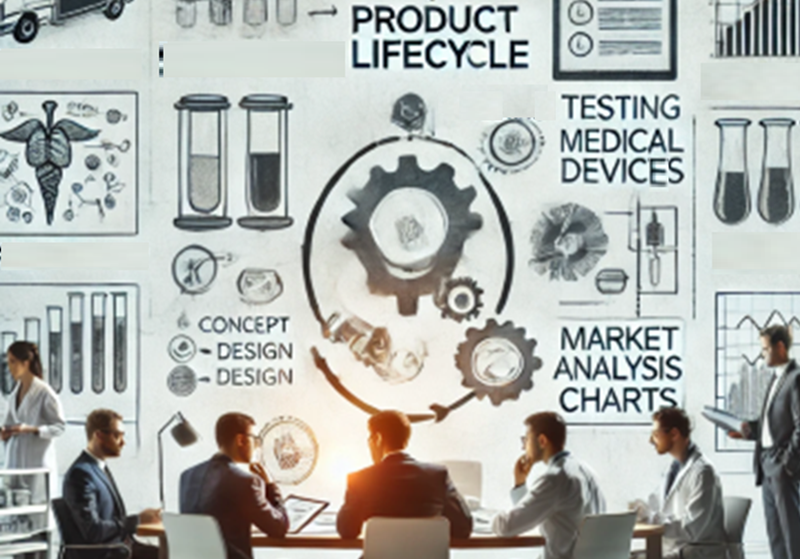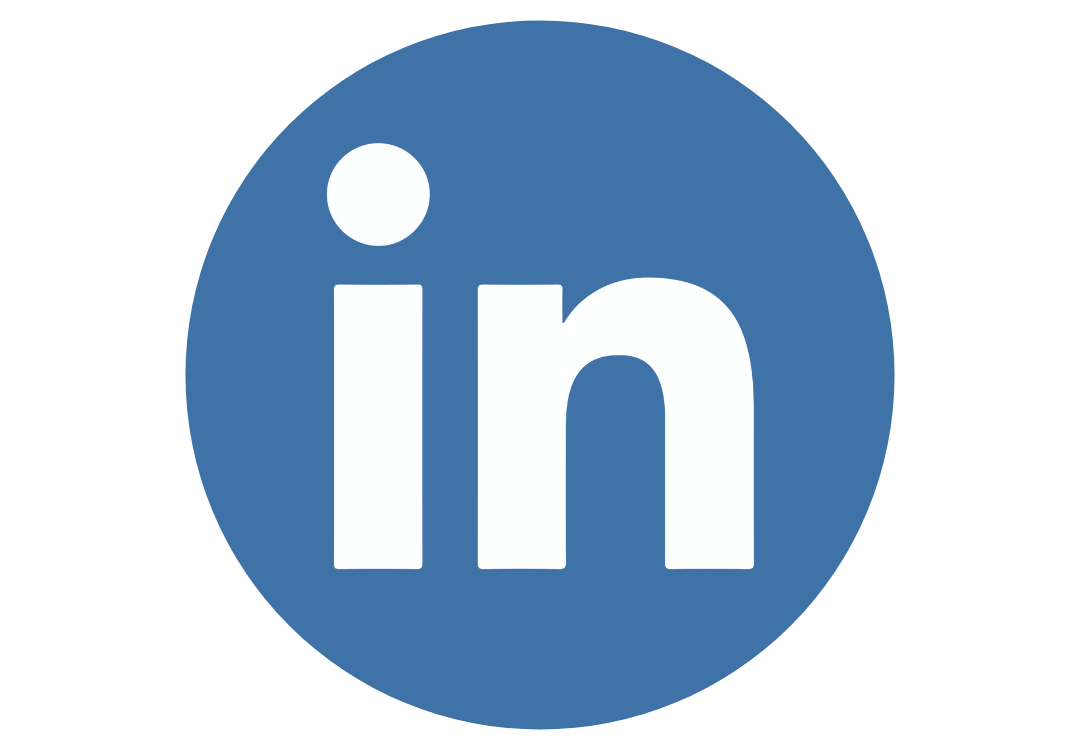Switzerland (Head Quarters)
IDR Medical Switzerland
Austrasse 95, CH-4051 Basel, Switzerland
T:
+41 (0) 61 535 1109
UK
IDR Medical UK
Unit 104 Eagle Tower, Eagle Tower
Montpellier Drive, Cheltenham, GL50 1TA
T:
+44 (0) 1242 696 790
USA
IDR Medical North America
225 Franklin Street, 26th Floor
Boston, Massachusetts 02110, USA
T:
+1 (0) 617.275.4465

5 Stages of Product Lifecycle: How Market Research Can Help
Developing a medical device can be a complex process.
There are many important decisions to be made at every stage of research, design, and development, each of which can significantly impact the successful launch of your medical device.

To help make the product development process more manageable, it’s often beneficial to break it down into distinct stages, which we call the medical device product lifecycle.
In this article, we will explore the five key stages of the product lifecycle and explain how market research can support you in making more informed decisions, reducing risk, and ensuring your product meets the needs of patients and healthcare professionals.
1. Concept and feasibility
The concept and feasibility stage is the foundation of the medical device development process.
This stage involves generating initial ideas for your medical device, assessing market needs, and evaluating the economic viability of your product.
Market research plays a crucial role in this stage of the product lifecycle. It helps you identify your target market, gather valuable customer insights, and research existing products on the market.
When assessing your target market, it’s important to understand the needs and motivations of the different groups of people who will be using your device and the different stakeholders who will be involved in the purchasing decision.
This is where customer segmentation projects are valuable.
Customer segmentation helps you divide your potential market into smaller groups based on shared characteristics, such as location, customer size, purchase behavior, or attitudes to technology adoption.
Once you’ve segmented your audience, you can start investigating which segments present the best opportunities for your device—for example, looking at high-value segments that are likely to generate the most revenue or specific segments that have unmet needs your device can address.
Unmet needs analysis often complements market segmentation in the concept and feasibility product lifecycle stage. This approach to market research uses qualitative techniques like ethnography and focus groups to uncover areas where existing products fail to meet the needs of different groups of patients and healthcare professionals. Armed with this insight, you can tailor your product development to meet these unmet needs, giving you the best chance of standing out in the market at launch.
Another key part of this product lifecycle stage is evaluating the market potential of your product. A market assessment valuation provides insight into things like the size of the market, growth trends, the competitive landscape, and other factors that could influence your product’s success. The ultimate aim of the evaluation is to help you understand the financial success your product is likely to have and whether it is a concept that is worth pursuing.
2. Design and development
If the market assessment valuation results are positive and you decide to proceed with your medical device, the next stage in the product life cycle is design and development.
This stage is complex and multifaceted, including initial design, prototyping, and iterative testing. The ultimate goal is to turn your product concept into a functional, market-ready device.
During this part of the product development lifecycle, market research continues to play an important role.
By incorporating user feedback from exploratory tests and assessment tests into the design and development process, you give yourself the best chance of developing a medical device that is likely to succeed in the market.
For example, during the early development stage, you might explore different design options, using interviews or focus groups with different stakeholders to help you better understand which product variation is likely to be more suitable and successful at launch.
3. Verification and validation
Verification and validation are important product lifecycle stages in the medical device development process. They help ensure that the product meets the user needs identified in the initial concept and feasibility stage and meets all relevant safety and compliance requirements.
The best way to achieve this is by seeing how end users respond to and engage with your product in confirmation tests, which use both quantitative and qualitative methodologies to understand usability and performance.
However, the fact that this stage comes before your device is submitted for regulatory approval can complicate the market research process - as it’s impossible to test unregulated prototype devices on genuine patients or in real-world healthcare settings.
To get reliable verification and validation insight, it’s likely that you’ll need the expertise of a market research company that has experience working in the medical device sector and can help you overcome this challenge.
For example, IDR Medical often uses clinical simulation centers, which replicate real-world healthcare settings and simulate the complex workflows that end users are likely to face. These centers allow you to access a safe, realistic environment to test your unregulated device and gain feedback on its usability and any potential design issues that need addressing before you submit it for regulatory approval.
Another more cost-effective approach is to use standard market research viewing facilities for validation tests. Although these venues don’t emulate a real-world healthcare environment, they can still be valuable for providing insight into how users engage with your medical device and identifying any issues that need to be addressed before you go through the regulatory review process
4. Regulatory review and launch preparation
Every medical device needs regulatory approval before it can be marketed and sold.
Before you submit your device for approval, it’s important to make sure that it complies with all international standards, such as IEC 62366, which governs the usability of your device, and demonstrate that you’ve considered the risk management of your medical device in alignment with ISO 14971. If you’re unsure about the processes you need to follow and the evidence you need to provide to ensure regulatory approval - an experienced medical market research company can help you capture the usability data required.
When planning for product launch you also need to determine a pricing strategy and value proposition that will ensure the commercial success of your new product.
The pricing of your medical device can significantly impact its market success. Price your device too high, and you’ll likely not see the uptake you’d like at launch. Price your device too low, and your device will not fully capitalize on profit opportunities.
To help you identify the optimal pricing strategy for your medical device, it’s important to take a comprehensive research-driven approach. Experienced medical market research companies can help understand your ideal price point by using a number of methodologies, such as Gabor Granger, Van Westendorp, and conjoint analysis. By understanding how your audience views your product in relation to the competition and the value they place on its features and benefits - you can price your device for success.
Alongside pricing, crafting a clear and compelling value proposition that can be communicated consistently across all your customer touchpoints is important.
Your value proposition should communicate how your device addresses each audience segment's needs and pain points, as identified in the first stage of the product lifecycle.
How you develop your value proposition also depends on whether your device is equivalent (similar to other devices in the market) or innovative (providing unique features or benefits). The value proposition for an equivalent device might focus more on cost savings and reassuring stakeholders that there is no risk in switching, whereas the proposition for an innovative device might focus more on improvements to patient care and efficiencies for healthcare professionals.
5. Launch and post-launch assessment
Once your device is regulated and your pricing and value proposition have been thoroughly researched and agreed upon, you’re ready for a successful product launch.
However, the product lifecycle doesn’t stop there.
Regular, ongoing market assessments can help you adapt to changes in user needs, identify opportunities for improvement and innovation, and ensure that your product remains competitive and relevant in the long term.
Measuring your brand equity is another important part of the post-launch stage of the product life cycle. At IDR Medical, we use a framework called the Brand Equity Wheel to help you understand your levels of brand awareness, brand positioning, brand loyalty, and perceived quality. The actionable insights from these studies can provide you with a roadmap to help improve your brand reputation and increase the adoption of your medical device.
Looking for support in navigating the development process for your medical device?
The medical device development process is complex, and there are a lot of aspects to consider and address if you’re going to launch your device successfully.
Using market research at each stage of the medical device product lifecycle can help you more easily overcome the challenges you face. It can aid you in making more informed decisions, mitigating risk, and ensuring your medical device truly meets the needs of patients and healthcare professionals.
IDR Medical has more than 15 years of experience helping medical device manufacturers bring their products to market in more than 30 countries.
So, if you’re looking for support in the development process for your medical device, get in touch with our team today.



